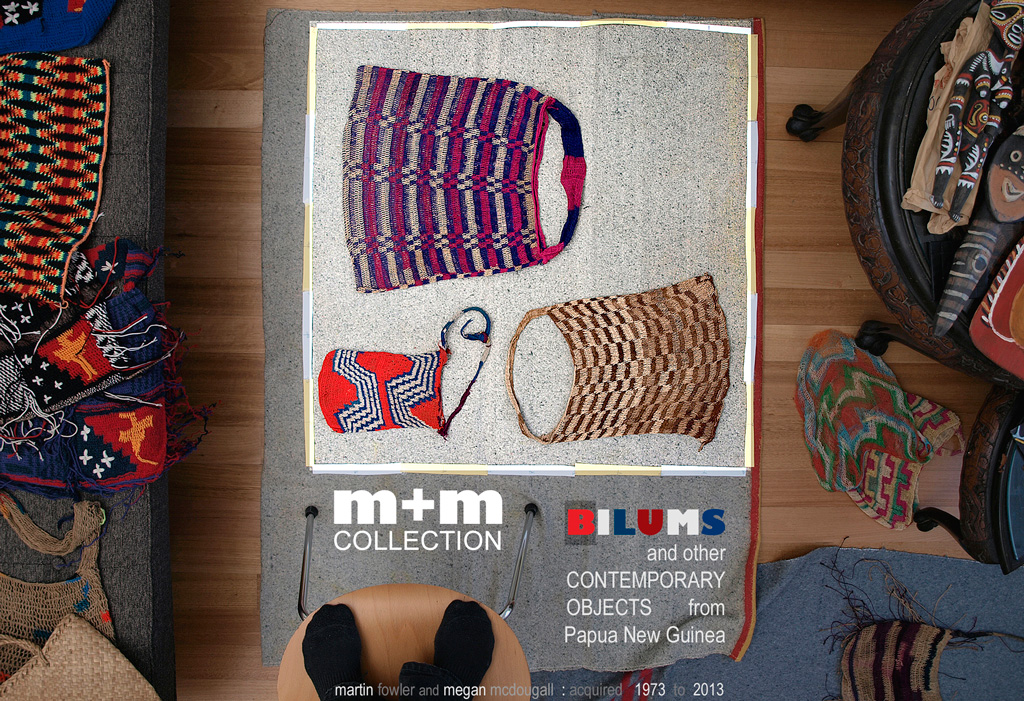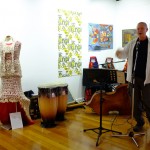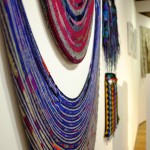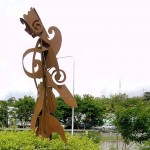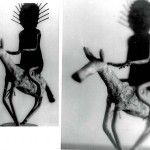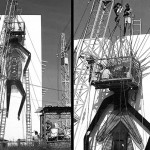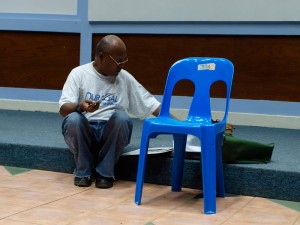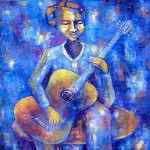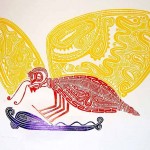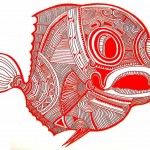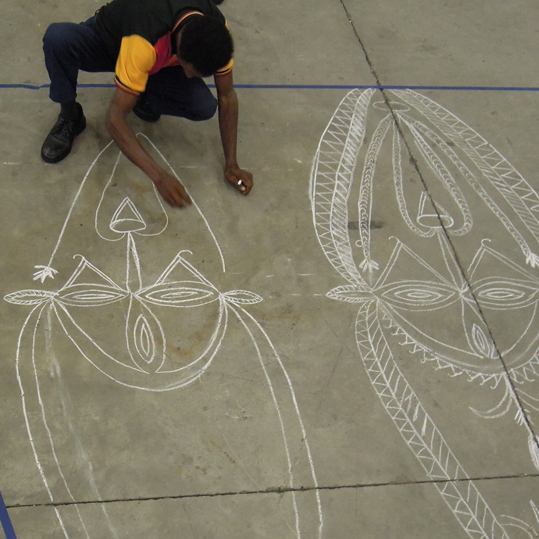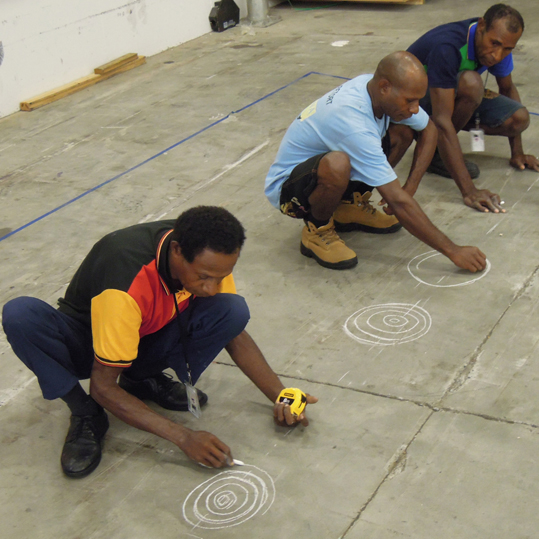held in the George Paton Gallery
2nd Floor Student Union Building The University of Melbourne 19th – 21st November 2013
WORLD Craft Council – Asia Pacific Region South Pacific
Alcaston Gallery and CRAFT (formerly CRAFT Victoria)
Amity Craft Exhibition was curated by Lindy Joubert and Ben Sievewright of the UNESCO Observatory at the University of Melbourne. Artists and others represented included :
Nick Mount presented by Kirra Gallery, Dr Marian Hosking presented by Gallery Funaki, Igora Lucyna Opala Igora Design, Tiwi Islands—Robert Edward Puruntatameri presented by Manupi Arts (photograph by Sabrina Talarico), Professor Robert Baines, PNG—m+m collection — Billums and Contemporary Objects, Cook Islands — Kay George, West Timor — Dr Ruth Hadlow Textile Collection, Australian Tapestry Workshop, Central Australia — Tjanpi Desert Weavers presented by Alcaston Gallery, Central Australia — Tjanpi Desert Weavers presented by Alcaston Gallery, Tonga — Sahra Stolz Collection, Pam Hovel Raw Edge Textiles, South Asia — Sally Campbell, South Pacific — Footscray Community Arts Centre (Artwork by Debbie Flowers, Treahna Hamm and Kui Taukilo; photography by Steven Rhall)
Martin Fowler helped design and install the show with Lindy Joubert and Ben Sievewright, and Bo Svoronos helped hang the works presented by the Footscray Community Arts Centre participants. Others like Sahra Stolz who photographed the opening, helped with interpretation and generally at times. Lighting was by the staff of the George Paton Gallery.
The Amity show was very impressive, colourful and richly diverse as it opened up with a horizontal banner fishing net and Island objects through small jewellery and like objects through the tapestry, textile, Tiwi and Central Australian works to the PNG selection which closed off the end of the long gallery. Interspersed were the tall free standing objects including mannequins with costume pieces —one being a white ‘bilum dress’ by Vicki Kinai called First Contact (Twisted cotton and bilum weave). There are a number of other women artists who have made bilum dresses over the years —entering them in Fashion Shows, and some of their works are now collectors items held by galleries such as Queensland Art Gallery, and by some overseas collections.
The selection from the m+m collection shown at this exhibition is some of the prints acquired from the National Art School (PNG) and, later, bilums, paintings and objects that were commonly available, and found mostly ‘on the footpath’ in towns, and occasionally from artefact dealer shops, or direct from people in villages —from about 1973 to mid 2013.
They give a reasonable indication of the artistic creativity and highly developed and disciplined craft skills displayed in a range of readily available, and sometimes everyday objects to be found around the country of Papua New Guinea. The scale of these objects belies the range and size of much other production in some parts of the country — like the amazing and very big art objects that some of the traditional mens houses represent, and the costuming and music and dance that go with celebrations and events all over the country.
The Catalogue can be downloaded as a pdf. 
Bilum Artists
A little bit about them, their bilums and their markets.
Below: A few of the bilum artists posing at their ‘shops’. Their works are in the m+m collection, Now, all I have to do is locate the notes with their names.
Bilums are made by women, most of whom are very skilled, and many of them are artistically creative in their design and aesthetic approaches, especially in the modern bilum arena. Bilums are functional objects on the most basic level, but they are importantly also imbued with layers of cultural, symbolic and symbolic meanings.
The aesthetic and robust properties of the materials and techniques of the looping and construction of modern bilums has seen bilum artists branch out into dress fashion works and other forms of expression.
That is not to dismiss the beauty and individuality and variety within traditional ceremonial bilums, made of natural fibres, where there are often quirky or spectacular attachments added to the surface patterns. And, there is the skill of making the fibre into string and then naturally colouring it with special known things like raw turmeric roots.
White girls and bilums

L: Ruth, Georgia and Megan, Tongwinjamb in 2013. R: Isobel in a highlands bilum, Lae about 2006.
photos : Justin Francis and Jonika Paulson
A note for occasional collectors of bilums
Most of our bilums were collected from anonymous artists at various footpath and other communally operated selling points. And, at the time of purchase it was difficult to ascertain the WOMEN ARTISTs’ names, especially when the purchase is spontaneous and done during a rush to the airport, or some other appointment. At other times the bilums were presents given after a stay at, or a visit to a village. If a festivity or ceremony was involved then the difficulty of locating the maker greatly increased.
The provenance of some of the more recent bilums (2004 onwards) can be found by searching through diary notes, or stray available pieces of paper stuffed in there after the event. My filing system usually works —eventually, but I should be more systematic with referencing and tagging such notes etc.
Some of the sellers at stall-markets sell for their friends, and each other, at times. In such cases it is common for the names of the makers to be on a slip of paper in the bilum (sometimes with a nominated price). That makes it easier to keep the provenance clear, but sometimes transcribing info and getting the details of ‘ples’ and surname takes time. — For example, at the roadside bilum and craft market on the edge of Wewak town it was a woman who had moved to town from Chambri who was selling hers and others’ bilums and carvings. She knew the info about all the bilums —but had to serve other customers too -so the process took a while.
Whenever possible, on occasional trips to PNG, Martin tries to encourage sellers or agents to properly identify the amazing women artists as creators of their works. He also urges any occasional collector, and particularly regular collectors to plan time to get this provenance information.
